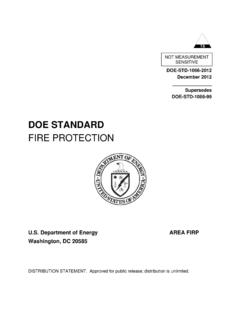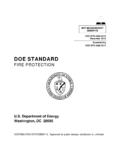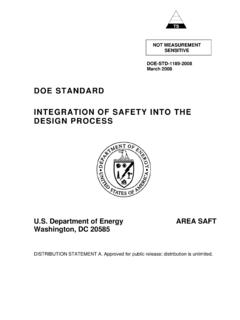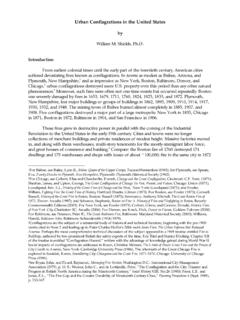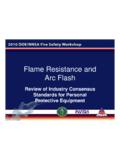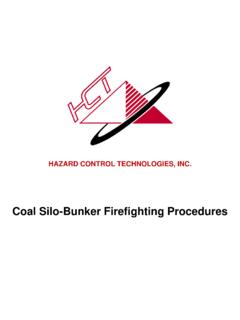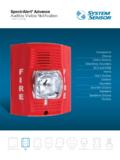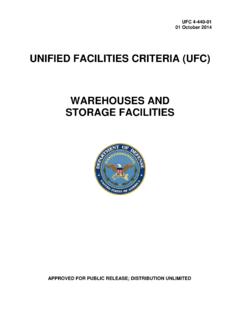Transcription of The FPE PE Exam and You - Tennessee Valley …
1 The Fire ProtectionThe Fire ProtectionProfessional Engineer Professional Engineer Exam andExam andYOUYOUP urpose of the ExamPurpose of the Exam Prove the engineer is competent Prove the engineer is competent enough to practice independently enough to practice independently without adversely affecting the health, without adversely affecting the health, safety, or welfare of the publicsafety, or welfare of the public ASSESS MINIMUM COMPETENCYASSESS MINIMUM COMPETENCY Identify adequate engineers not the Identify adequate engineers not the best engineer best engineerHistorical Exam StructureHistorical Exam Structure Part machine scored (Part machine scored (scantronscantron)) Part hand scored (essay)Part hand scored (essay)
2 8 problems with 10 parts each8 problems with 10 parts each Limited choice of which problems to Limited choice of which problems to workworkCurrent Exam StructureCurrent Exam Structure All machine scoredAll machine scored 80 problems 80 problems Each independent of Each independent of othersothers Must attempt all problems, no choicesMust attempt all problems, no choicesGoals for Future ExamsGoals for Future exams Reduce need for reference materials to Reduce need for reference materials to the exam site to the SFPE Handbook of the exam site to the SFPE Handbook of Fire Protection EngineeringFire Protection Engineering Test candidate s knowledge of fire Test candidate s knowledge of fire protection engineering principles, not protection engineering principles.
3 Not the ability to look up code requirementsthe ability to look up code requirements Eliminate need to revise exam items Eliminate need to revise exam items when codes are revisedwhen codes are revised Facilitate onFacilitate on--demand computerdemand computer--based based testingtestingExamination Development Process OverviewEquating of ExaminationQuestion Writing & ReviewExamination Assembly & ReviewExamination ScoringStandard Setting StudyNeed for Examination IdentifiedTask Analysis Performed(PAKS)Examination Specification DevelopedExamination AdministrationAfter Cut Score EstablishedExam Specification Types of fire protection analysis Types of fire protection analysis 10 q10 q Info sources for FP analysis Info sources for FP analysis 6 q6 q Fire protection management Fire protection management 8 q8 q Fire dynamics Fire dynamics 8 q8 q Human behavior Human behavior 4 q4 q Water based fire suppression Water based fire suppression 10 q10 q Special hazard systems Special hazard systems 4 q4 q Detection and alarm Detection and alarm 7 q7 q Smoke management Smoke management 4 q4 q Explosion protection Explosion protection 3 q3 q
4 Passive building construction Passive building construction 10 q10 q Means of egress Means of egress 6 q6 qRanked by EmphasisRanked by Emphasis Types of fire protection analysis Types of fire protection analysis 10 q10 q Water based fire suppression Water based fire suppression 10 q10 q Passive building construction Passive building construction 10 q10 q Fire protection management Fire protection management 8 q8 q Fire dynamics Fire dynamics 8 q 8 q Detection and alarm Detection and alarm 7 q 7 q Info sources for FP analysis Info sources for FP analysis 6 q6 q Means of egress Means of egress 6 q6 q Human behavior Human behavior 4 q4 q Special hazard systems Special hazard systems 4 q4 q Smoke management Smoke management 4 q4 q Explosion protection Explosion protection 3 q3 qThe Life Cycle of an Exam The Life Cycle of an Exam QuestionQuestion Drafted by rank & file SPFE member (YOU)Drafted by rank & file SPFE member (YOU) Reviewed/edited by subject matter experts on Reviewed/edited by subject matter experts on SFPE Licensing (Exam) CommitteeSFPE Licensing (Exam) Committee Beta tested at SFPE Annual Meeting (YOU)Beta tested at SFPE Annual Meeting (YOU)
5 Put into the Problem Bank at NCEESPut into the Problem Bank at NCEES Pulled from Bank to assemble examinationPulled from Bank to assemble examination Given on examinationGiven on examination ReRe--evaluated based on exam performanceevaluated based on exam performanceItem WritingItem WritingItem Writing NomenclatureItem Writing NomenclatureItem = entire questionItem = entire questionStem = problem statementStem = problem statementOptions = multiple choicesOptions = multiple choicesKey = right answerKey = right answerDistracters = wrong answersDistracters = wrong answersExample ItemExample ItemStem Stem --Which of the following temperatures Which of the following temperatures in in C is most nearly equivalent to a C is most nearly equivalent to a temperature of 60 temperature of 60 F?
6 F?Options:Options:Key Key (A)(A)1515 Distracter Distracter (B)(B)3333 Distracter Distracter (C)(C)5050 Distracter Distracter (D)(D)5151 Solution to ExampleSolution to Example(60 (60 --32) 5/9 = ) 5/9 = (a)Option (a)Distracters:Distracters:(b) did not subtract 32 from 60(b) did not subtract 32 from 60( = 33)( = 33)(c) multiplied by 9/5 (c) multiplied by 9/5 ( = 50)( = 50)(d) added 32 to 60 (d) added 32 to 60 ( = 51)( = 51)Writing Good Items Writing Good Items --DOsDOs Work in about 6 minutesWork in about 6 minutes One correct answerOne correct answer Simple and direct languageSimple and direct language Code information given in stemCode information given in stem Plausible optionsPlausible options Mutually exclusive optionsMutually exclusive options Common errors make good distractersCommon errors make good distracters All options the same lengthAll options the same length Most items include the term is most Most items include the term is most nearly nearly Writing Good Items Writing Good Items DON TsDON Ts Code LookCode Look--up up Negative wordingNegative wording
7 Extremes (always/never/only/every)Extremes (always/never/only/every) Soft wording (much more/somewhat Soft wording (much more/somewhat more/much less)more/much less) Avoid grouping options too closelyAvoid grouping options too closely Use None of the above sparinglyUse None of the above sparingly Extraneous clues to the correct answerExtraneous clues to the correct answer Sets of questionsSets of questionsExamplesExamplesBased on the description of the excavated channel, Based on the description of the excavated channel, Manning s roughness coefficient should not exceedManning s roughness coefficient should not exceedA. : Say answer is (B), , then (C) and Flaw: Say answer is (B), , then (C) and (D) are also true(D) are also trueWhich of the following factors could enter into a Which of the following factors could enter into a decision about the type of circuit to be used?
8 Decision about the type of circuit to be used?A. Weather at the plant siteA. Weather at the plant siteB. Terrain at the plant siteB. Terrain at the plant siteC. None of the aboveC. None of the aboveD. All of the aboveD. All of the aboveAll or NoneAll or NoneFlaw: All of the above cannot be true since it Flaw: All of the above cannot be true since it includes None of the above includes None of the above Redundant control data highways for a DCS are Redundant control data highways for a DCS are to be extended with fiber optic cable. Which of the to be extended with fiber optic cable. Which of the following installation practices is the most following installation practices is the most important?
9 Important?BalancedBalancedA. Redundant fiber optic cables should be the same A. Redundant fiber optic cables should be the same length to minimize time delay to minimize time delay optic cables should not be run near and parallel Fiber optic cables should not be run near and parallel to alternating current alternating current fiber optic cables should take separate Redundant fiber optic cables should take separate paths to reduce common mode interferencepaths to reduce common mode fiber optic cables should take separate Redundant fiber optic cables should take separate paths to reduce risk of mechanical to reduce risk of mechanical practice; Qualitative;Balanced length of optionsIn extrapolating data to determine the 50In extrapolating data to determine the 50--or 100or 100--year flood from a series of much shorter duration, year flood from a series of much shorter duration.
10 The probable error or standard deviation of the the probable error or standard deviation of the estimated flood canestimated flood canShort distractersShort determined from a linear regression of Q versus Tbe determined from a linear regression of Q versus determined from a linear regression of Q versus log Tbe determined from a linear regression of Q versus log determined from a quadratic regression of Q versus log be determined from a quadratic regression of Q versus log NOT be determined because the method of extrapolating D. NOT be determined because the method of extrapolating the curve is arbitrary and has no basis in the physics of the the curve is arbitrary and has no basis in the physics of the hydrologic system, even though such extrapolation is hydrologic system, even though such extrapolation is routinely performed by engineering practitioners and routinely performed by engineering practitioners and regulatory : Key is longer than distracters -more qualified and specificFlaw.
![SFPE Equation Sheet [KL 10-19-2015]](/cache/preview/c/f/3/c/2/1/e/4/thumb-cf3c21e48064d8fdafc6507dedc08886.jpg)
